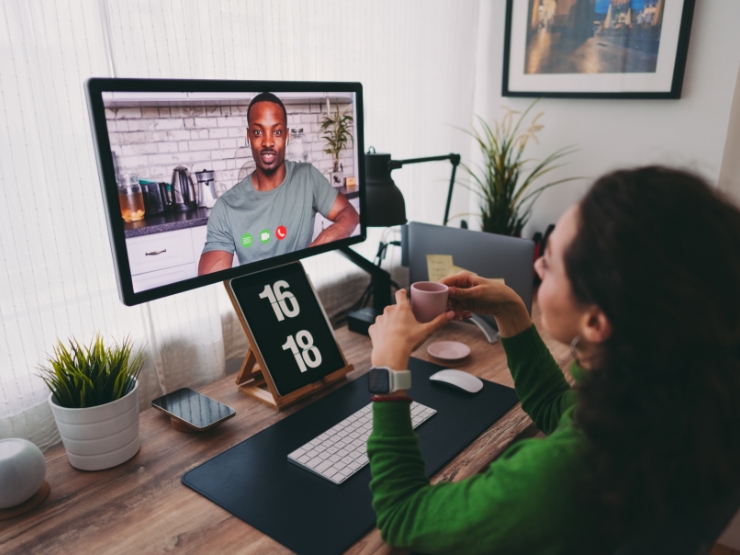-
Featured services
Harness innovation to deliver value
Ensure short-term stability as you design a roadmap for new use cases in your industry with emerging technologies.
Explore Connected Industries -
Services
View all services and productsLeverage our capabilities to accelerate your business transformation.
-
Services
Network as a Service
Popular Products
-
Private 5G
Our turnkey private 5G network enables custom-built solutions that are designed around unique use cases and strategies, and deployed, run and optimized through a full network-as-a-service model.
-
Managed Campus Networks
Our Managed Campus Networks services transform campus networks, corporate area networks and interconnected local area networks, and connect smart places and industries.
-
-
Services
Cloud Services
Popular Products
-
Cloud Migration and Transformation Services
Access the people, processes and technologies you need to deliver cloud migration projects that improve your return on investments.
-
Site Reliability Engineering Services
Get the most from your cloud investments when you harness our Site Reliability Engineering Services to support app development and lifecycle management.
-
-
Services
Edge as a Service
Client stories
-
Penske Entertainment and the NTT INDYCAR SERIES
Together with Penske Entertainment, we’re delivering digital innovations for their businesses – including INDYCAR, the sanctioning body of the NTT INDYCAR SERIES – and venues such as the iconic Indianapolis Motor Speedway, home to the Indianapolis 500.
-
Using private wireless networks to power IoT environments with Schneider Electric
Our combined capabilities enable a secure, end-to-end digital on-premises platform that supports different industries with the benefits of private 5G.
-
-
Services
Technology Solutions
Client stories
-
Services
Global Data Centers
-
Services
Digital Collaboration and CX

IDC MarketScape: Worldwide Datacenter Services 2023 Vendor Assessment
We provide a new kind of intelligent infrastructure to deliver better outcomes through technology.
Get the IDC MarketScape -
-
-
Insights
Recent Insights
-
The Future of Networking in 2025 and Beyond
-
Using the cloud to cut costs needs the right approach
When organizations focus on transformation, a move to the cloud can deliver cost savings – but they often need expert advice to help them along their journey
-
Make zero trust security work for your organization
Make zero trust security work for your organization across hybrid work environments.
-
-

Copilot for Microsoft 365
Everyone can work smarter with a powerful AI tool for everyday work.
Explore Copilot today -
-
Global Employee Experience Trends Report
Excel in EX with research based on interviews with over 1,400 decision-makers across the globe.
Get the EX report -
Discover how we accelerate your business transformation
-
About us
CLIENT STORIES
-
Liantis
Over time, Liantis – an established HR company in Belgium – had built up data islands and isolated solutions as part of their legacy system.
-
Randstad
We ensured that Randstad’s migration to Genesys Cloud CX had no impact on availability, ensuring an exceptional user experience for clients and talent.
-
-
CLIENT STORIES
-
Liantis
Over time, Liantis – an established HR company in Belgium – had built up data islands and isolated solutions as part of their legacy system.
-
Randstad
We ensured that Randstad’s migration to Genesys Cloud CX had no impact on availability, ensuring an exceptional user experience for clients and talent.
-
-
CLIENT STORIES
-
Liantis
Over time, Liantis – an established HR company in Belgium – had built up data islands and isolated solutions as part of their legacy system.
-
Randstad
We ensured that Randstad’s migration to Genesys Cloud CX had no impact on availability, ensuring an exceptional user experience for clients and talent.
-

NTT DATA and HEINEKEN
HEINEKEN revolutionizes employee experience and collaboration with a hybrid workplace model.
Read the HEINEKEN story -
- Careers
Topics in this article
Enabling business-led IT to realize faster value – an NTT Ltd. story
NTT Ltd. has embarked on a strategy to be a digital enterprise by 2023. Our goal is to drive optimal levels of digital client and employee experience and ease the path to value through operational efficiency and speed-to-market.We’re moving faster and faster. Our business-led IT journey is grounded in the belief that enterprise capabilities, a global operating model and modern engineering with data is the enabler and the foundation on which we’ll build and execute our business strategy.
We started with modernizing our technologies from hardware to software, from on-prem to cloud and digitization so that we can operate as ‘one NTT’ and ease clients’ journey to our value. Next was finding ways to empower our people with digital tools and technologies that create meaningful in-person and virtual experiences.
For us, driving operational efficiency means effecting change from complexity to simplicity that ensures we’re an ‘easy’ company to do business with in terms of time, cost and effort.
And finally, improving speed-to-market means relooking our systems and tools and asking ourselves if they’re truly fit-to-standard. How can we simplify our approach by using fit-to-standard and steering away from over-customization which can add complexity and cost? And can our technology be relied on to help us craft relevant solutions and services that resonate with our target audiences?
What’s encouraging is that we’re not alone in our holistic approach to building a resilient, profitable and people-centric digital enterprise.
We recently published our 2021 Global Workplace Report, which shares data and insights gathered from 1,146 leaders from across 23 countries. For me, one of the key takeaways from the Report is that today’s forward-looking business leaders are driving an organizational strategy of ‘total experience’.
Essentially, this means looking both inwards and outwards. It means being intentional about delivering the absolutely greatest client experience possible but understanding that that client experience will only be authentic and consistent if your own employees are happy.
Building the ‘one NTT’ experience – one brick at a time
In understanding NTT’s own journey and progress to date, it’s useful to view it through the lens of ‘where we were and where we’re heading.’
Let’s take the first pillar of client experience.
Here, our vision was to eliminate any situation in any areas of our business where there was a lack of cohesion and interoperability between our people, our clients and partners and the tools and systems they use. We knew that as long as disparate teams and groups were working in siloes and the communication between them was fragmented and asynchronous, we’d pay the price in terms of a poor client experience.
We interrogated how to address and optimize our employee experience in a similar way.
For instance, not too long ago, many of our people were working on multiple systems for the same processes, as our enterprise platforms didn’t interoperate at even the most basic level.
Now, that was partly a result of a strategic restructuring and unification effort that saw us bringing together 50,000 people across 31 operating companies to create a ‘single NTT’ in 2019. That would have been a colossal task for any business at the best of times, but the pandemic and its associated disruptions certainly didn’t make our task any easier! Still, having every employee using different systems to run the same processes isn’t a workable, efficient or sustainable arrangement.
But in thinking about how to address the challenge, we asked ourselves, ‘Is there a way to not use “tribal knowledge” but rather digital knowledge and digital enablement technologies to drive better productivity and satisfaction?’
For me personally, employee experience is an outcome, not a process. It’s the culmination of a thoughtful effort to make NTT a place where people feel empowered and one where they actually want to work. It’s about making it easier and more satisfying for people to work and collaborate using digital applications, connectivity and knowledge-sharing and automation tools. Importantly, these tools need to accommodate a hybrid workplace future where people will want to continue working from home at least some of the time.
Likewise, on operational excellence, we honed in on areas of our business where there was obvious duplication of infrastructure and therefore cost. Getting this right has taken a great deal of time and effort – for example, I’ve lost count of the number of applications we’ve had to decommission over the last two years as part of our journey. It’s not been easy, as sometimes people get attached to the tools they’re using, although they may not be serving them or our business as well as they should be.
But we knew as long as there were pockets within our business where infrastructure, applications and systems needed to be modernized or even laid to rest, we’d never reach our goal of becoming a truly digital enterprise.
Using data to connect the dots
Another theme that emerged from the Report that resonates with me is the notion of embedding data and analytics in everything you do. At NTT, we are investing deeply in building a single ‘master data’ repository for every area of our business – sales, finance, services, IT, human resources and everything in between.
Now, we’re focusing on harmonizing those various data stores and connecting them to create a unified value stream and interconnected systems of engagement that run through our entire business. This makes it much easier for our employees to ‘connect the dots’ – not just in performing their day-to-day jobs but also in understanding how their efforts impact the outcomes of the business.
Data also allows us to track our progress at a granular level and prove that we’re effecting meaningful change. This helps us reaffirm the messages we’re communicating to our different stakeholders.
Ultimately, I believe that today, to create a digitally resilient organization, leaders shouldn’t adopt digital simply for the sake of digital. My advice is don’t get too focused on the tools and applications – yes, they’re important, but they’re there to serve a larger purpose.
Technology is the ‘what.’ But it’s the ‘how’ that matters more.
Today, business led-IT should be viewed as a way to turn challenges to opportunities to create value, deliver value and realize value.


